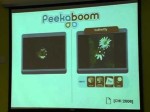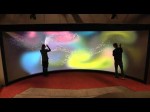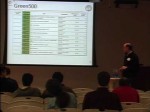
Google TechTalks July 26, 2006 Luis von Ahn is an assistant professor in the Computer Science Department at Carnegie Mellon University, where he also receive…

Click to Tweet and share this video! clicktotweet.com Download the LockerGnome App: Android Phone: play.google.com iPhone / iPod touch: itunes.apple.com Want to remotely troubleshoot computer problems? Use our sponsor’s product: go.tagjag.com Need my advice for your business? Join: gnomies.com and go.tagjag.com What Happens with Star Wars Now? www.lockergnome.com Windows 8: a Beginner’s Guide for the Bewildered — Part 1 of 3 www.lockergnome.com 10 Hot New Technologies We Will See Before 2021 www.lockergnome.com How to Add a New User in Windows 8 www.lockergnome.com How to Sharply Reduce Your Restaurant Bill at Airports www.lockergnome.com How to Change App Settings in Windows 8 www.lockergnome.com Pirillo Vlog 191 — More Than Meets the Eye youtu.be Get three domains for $5.99 [expires 11/30/12] www.godaddy.com Save 20% on your entire order [expires 12/31/2012] www.godaddy.com twitter.com www.facebook.com google.com === NEWS AT&T and T-Mobile to Share Networks in NY and NJ in Wake of Hurricane Sandy www.theverge.com Comcast Offers Free Wi-Fi Service to All in Sandy’s Path news.cnet.com Nexus 7 Sales Approaching One Million a Month blogs.wsj.com Facebook Tests Timeline Layout with Single Column of Posts www.insidefacebook.com Intel Working on 48-core Chip for Smartphones, Tablets www.computerworld.com AMBER Alerts for Missing Children Now in Google Search and Maps googleblog.blogspot.com === Question iPhone 5 vs Galaxy Note 2

aworkathomebusinesses.com We have all wanted to know how to start a work at home business at some time. The problem is with all the scams and internet guru’s trying to sell you instant riches, and overnight success programs that don’t work. People have been scared to try anything work at home related because of this, this video tells you how you can start a legitimate work at home business. The Wealthy Affiliate University has all the tools and training on this and how you can get started for free. They offer a 10 day trial, so that you can be the judge on whether or not this is something you would like to pursue or not. http

This is the curved (!) screen in our reality center of the University of Groningen. We just finished building our own touch detection for it. We used six Optitrack v120 slim camera’s which have a good sensitivity for infrared light. We used 16 cheap infrared emitters (the kind used for security systems) with a total of 1000 LED’s. The touch detection software runs on three old computers each with two camera’s connected. One extra computer combines the output from the detection computers and send event data to our main visualization system. This way we have (even using the old computers) enough processing power to be able to run the detection software at 60Hz and with a latency between 30 ms and 50 ms. It can detect without any problem 100 different touches at any time (more is possible, but it becomes slower) We used a modified version of Community Core Vision (CCV) 1.4 (nuigroup.com) (modified so it can do two camera’s on one computer). The communication protocol is preferable TUIO (tuio.org) and we did install Multi-touch Vista (multitouchvista.codeplex.com), which translates TUIO events to WM_TOUCH events for windows 7. The demos you see in the video are from Multitouch for Java(tm) MT4J (mt4j.org/mediawiki/index.php/Main_Page). The part where the wizards are throwing fireballs at each other is using msafluid (project home is at msavisuals.com/msafluid ). The curved screen itself is consist of a 3 mm dark acrylic layer, coated with a diffuser on the front. Illumination …

Alex talks with Roman Yampolskiy, a computer scientist at the University of Louisville in Kentucky, who recently wrote an article about the danger to humanity from AI and super-intelligent computers. Mr. Yampolskiy is trained in the fields of programming, forensics, biometrics and artificial intelligence. cecs.louisville.edu www.infowars.com www.prisonplanet.tv twitter.com www.facebook.com [Related Article] Humanity Must ‘Jail’ Dangerous AI to Avoid Doom, Expert Says Super-intelligent computers or robots have threatened humanity’s existence more than once in science fiction. Such doomsday scenarios could be prevented if humans can create a virtual prison to contain artificial intelligence before it grows dangerously self-aware. Keeping the artificial intelligence (AI) genie trapped in the proverbial bottle could turn an apocalyptic threat into a powerful oracle that solves humanity’s problems, said Roman Yampolskiy, a computer scientist at the University of Louisville in Kentucky. But successful containment requires careful planning so that a clever AI cannot simply threaten, bribe, seduce or hack its way to freedom. “It can discover new attack pathways, launch sophisticated social-engineering attacks and re-use existing hardware components in unforeseen ways,” Yampolskiy said. “Such software is not limited to infecting computers and networks — it can also attack human psyches, bribe, blackmail and brainwash those who come in contact with it.” www.innovationnewsdaily.com

IPv4 addresses are still running out. Global IPv4 address pool administered by IANA organization is depleted together with IPv4 pool of APNIC Routing Registry. This situation pushes organizations to think about IPv6 transition. Unfortunately IPv4 and IPv6 are incompatible protocols which raise new security issues and problems with user monitoring and accounting. The article shares experiences of deploying IPv6 on the university campus network and describes the most significant troubles that we have been faced with. It describes and compares differences in first hop security in IPv6 and IPv4 networks. Issues connected with user addressing, accounting and monitoring are also discussed. The experience is mainly based on the deployment of IPv6 on the campus network at Brno University of Technology which is one of the biggest universities in the Czech Republic.

Google Tech Talks January, 25 2008 ABSTRACT In this talk we examine how high performance computing has changed over the last 10-year and look toward the future in terms of trends. These changes have had and will continue to have a major impact on our software. A new generation of software libraries and algorithms are needed for the effective and reliable use of (wide area) dynamic, distributed and parallel environments. Some of the software and algorithm challenges have already been encountered, such as management of communication and memory hierarchies through a combination of compile–time and run–time techniques, but the increased scale of computation, depth of memory hierarchies, range of latencies, and increased run–time environment variability will make these problems much harder. We will focus on the redesign of software to fit multicore architectures. Speaker: Jack Dongarra University of Tennessee Oak Ridge National Laboratory University of Manchester Jack Dongarra received a Bachelor of Science in Mathematics from Chicago State University in 1972 and a Master of Science in Computer Science from the Illinois Institute of Technology in 1973. He received his Ph.D. in Applied Mathematics from the University of New Mexico in 1980. He worked at the Argonne National Laboratory until 1989, becoming a senior scientist. He now holds an appointment as University Distinguished Professor of Computer Science in the Electrical Engineering and Computer Science Department at …